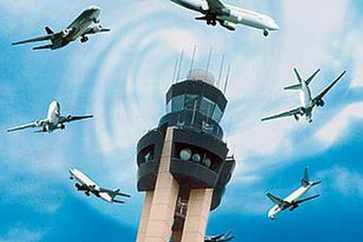關注氣候峰會 學習環保詞匯
國際航空運輸協會在哥本哈根會議期間公布了航空業的減排目標,承諾到2050年,該行業的碳排量將比2005年減少50%。航空公司、機場、空中航行服務供應商和制造商等協會成員均承諾:到2020年,年均燃效提高1.5%;從2020年開始,穩定碳排放,達到碳中和增長;到2050年,碳排放量將比2005年減少50%。根據這項目標計劃,從現在起到2020年,航空業的二氧化碳凈排量將達到一個峰值,之后將會趨于穩定并逐漸呈下降趨勢,并且該趨勢不受航空運輸量增加的影響。這一目標的提出將督促航空企業更多地考慮使用綠色技術和可替代能源,同時也促使航空運輸行業采取一定的經濟手段來激勵為減排做出貢獻的企業。

|

|
|
The world aviation industry yesterday announced a long-term goal to cut carbon dioxide emissions to half the 2005 levels by 2050, becoming the first industry to articulate a reduction goal at the Copenhagen climate change conference.
|
The world aviation industry yesterday announced a long-term goal to cut carbon dioxide emissions to half the 2005 levels by 2050, becoming the first industry to articulate a reduction goal at the Copenhagen climate change conference.
The agreement, reached between 230 airlines in the International Air Transport Association (IATA), aircraft manufacturers, air traffic control providers and airports, sets a series of targets for the industry:
* Improve fuel efficiency on average by 1.5 percent per year until 2020;
* Stabilize emissions with carbon-neutral growth from 2020;
* Cut emissions in half by 2050, compared to 2005 levels.
Under this plan, net carbon dioxide emissions from aviation would peak between now and 2020 and would stabilize and then decline after that, despite increases in traffic growth.
However, final decisions on how to achieve the ambitious goal will be made in September 2010.
"We're the only industry coming to Copenhagen with a clear and ambitious reduction goal," said Giovanni Bisignani, director general and CEO of IATA.
The proposal would increase airfares and could prompt a race for green technologies among aircraft makers, which are pinning high hopes on new technologies for reducing emissions. The development of sustainable alternative jet fuels, such as those generated from algae, could help reduce emissions by 80 percent, said Bisignani. Other technologies, such as improving aircraft efficiency with lightweight materials and new engine designs, could all result in further cuts.
In addition, the industry will need to engage in economic measures to create successful incentive for airlines to reduce emissions, such as emission trading. "Airlines must be fully accountable for their emissions as an industrial sector, not by state or region," Bisignani said, adding free riders are not welcomed.
Aviation executives are trying to ensure that the industry is not stripped of its exemption from the Kyoto Protocol in Copenhagen. Despite the fact that the major airlines are trying to cut emissions from air travel, executives fear a failure in the international effort to agree a global deal on emissions trading, arguing that it could hurt the industry by way of increased taxes and regulation.
The last time global targets were agreed for reducing greenhouse gases was at the 1997 conference in Kyoto, but the airline industry was not included. In the years since, scientific evidence has supported growing concerns that carbon emissions caused by flying are a real problem. Airlines are responsible for 2 to 3 per cent of carbon emissions globally.
相關閱讀
中國崛起成10年來最受關注新聞
美減排新舉為氣候峰會打氣
意環保者塑“老貝”冰雕督促環保
(China Daily)

(中國日報網英語點津 Helen 編輯)